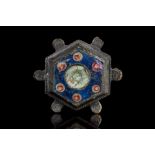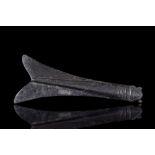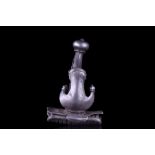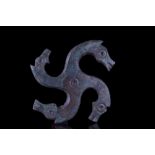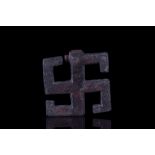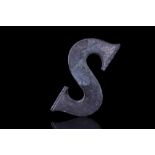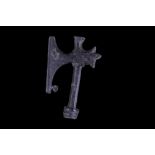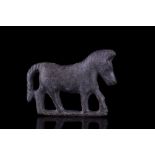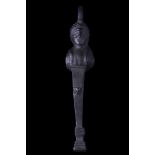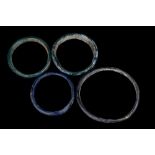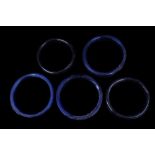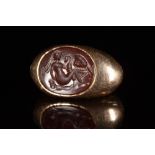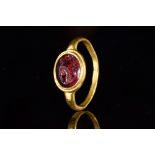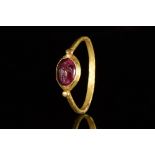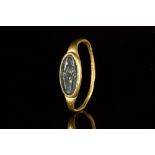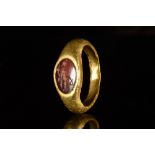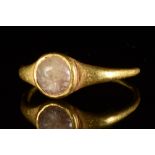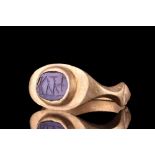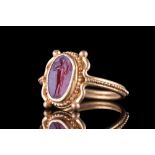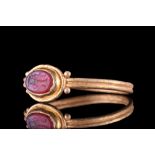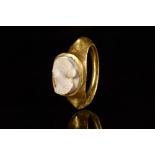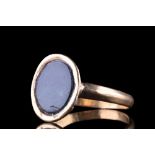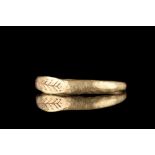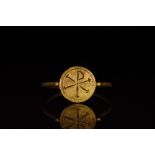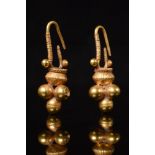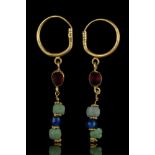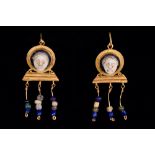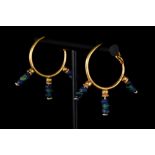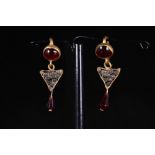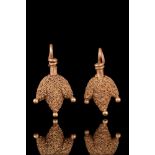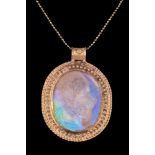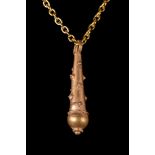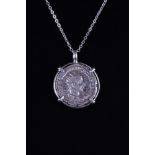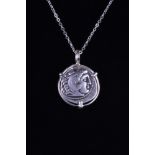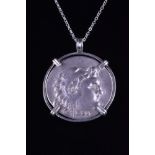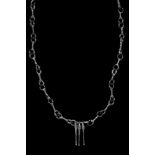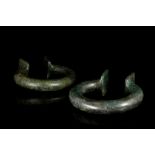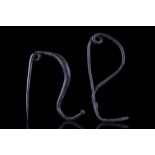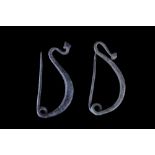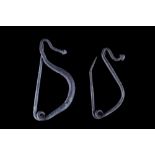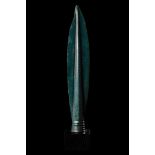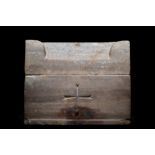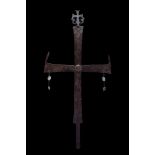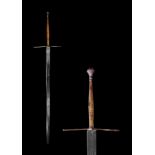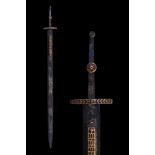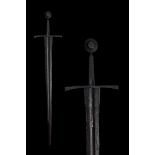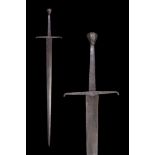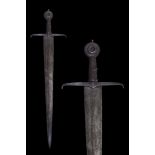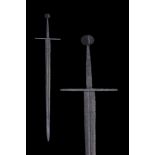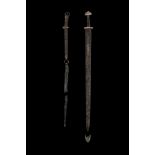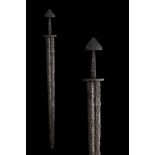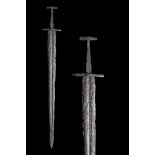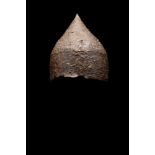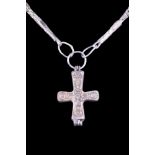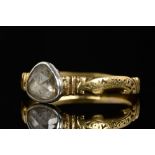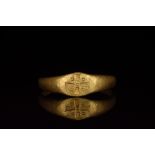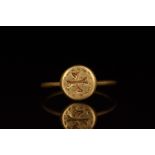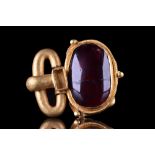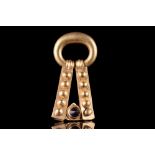Affinez votre recherche
Estimation
Catégorie
- Jewellery (92)
- Greek, Roman, Egyptian & Other Antiquities (85)
- Arms, Armour & Militaria (56)
- Sculpture (41)
- Ceramics (39)
- Coins (37)
- Chinese Works of Art (28)
- Glassware (25)
- Books & Periodicals (16)
- Salvage & Architectural Antiques (14)
- Porcelain (13)
- Collectables (9)
- Taxidermy & Natural History (6)
- Vintage Fashion (6)
- Classic Cars, Motorcycles & Automobilia (4)
- Furniture (4)
- Metalware (4)
- Textiles (4)
- Lighting (2)
- Islamic Works of Art (1)
- Musical Instruments & Memorabilia (1)
- Oil, Acrylic paintings & Mixed Media (1)
- Scientific Instruments (1)
- Stamps (1)
- Tools (1)
- Liste
- Grille
A subscription to the Price Guide is required to view results for auctions ten days or older. Click here for more information
ROMAN MILLEFIORI DISC BROOCH
Ca. 300 AD. A beautiful esagonal broach featuring small decorative peripheral lugs with coiled decoration, the rim decorated with an hatched patte...
ROMAN BRONZE FLY / CICADA BROOCH
Ca. 100-200 AD. Bronze brooch in the form of a fly or cicada, with broad, curving wings and stylised head. The catch plate and hinge are still pre...
Ca. 100 AD. A silver fibula brooch with an anchor-shaped body decorated with spheres to each finial. Spring mechanism with a pin and a catch plate...
Ca. 200-300 AD. A bronze open work plate brooch in the shape of a wheel, also known as a "Wheel of Fortune", depicting the Sun symbol in the centr...
Ca. 100-300 AD. A bronze brooch in a form of a swastika with four stylised horse head terminals, and a catch-plate on the reverse. The swastika wa...
ROMAN BRONZE SWASTIKA BROOCH
Ca. 100-300 AD. A bronze openwork swastika brooch with a catchplate on the reverse. The swastika was a symbol of lightning bolts in Roman art and ...
ROMAN BRONZE S-SHAPED BROOCH
Ca. 100-300 AD. A bronze S-shaped brooch with a catch plate on the reverse. Good condition. This object conveys the pervasiveness of a Celtic aest...
ROMAN BRONZE AXE-SHAPED BROOCH
Ca. 200-300 AD. An axe-shaped brooch with an asymmetric blade stretching downwards. This brooch type is typical of central European productions un...
ROMAN BRONZE HORSE BROOCH
Ca. 100-300 AD. A nice bronze plate brooch of a grazing horse on a baseline. The animal is modelled in the half-round with a looped tail. Catch pl...
ROMAN BRONZE HERM PENDANT
Ca. 1-300 AD. A bronze herm pendant of a quadrangular post narrowing downwards, and at the top ending with a bust of a man with his hair swept bac...
Ca. 100-300 AD. Four Roman glass bracelets of various sizes in a green, black, and blue palette. In contrast with the paucity of black glass vesse...
Late Roman, Ca. 300-500 AD. A group of five glass bracelets (also referred to as bangles) comprising monochrome glass strains bent into a loop. Co...
Ca. 200 AD. A carnelian intaglio engraved with a scene of Leda and the Swan set in a possibly later gold ring. Leda, a princess from Aetolia, who ...
ROMAN GRYLLOS INTAGLIO GOLD RING
Ca. 100 AD. A gold finger ring composed of a slender round hoop with an applied bezel cell set with a stone intaglio engraved with gryllos - a gro...
Ca. 100-200 AD. A gold finger ring of a thin hoop with fine granules to each shoulder. The bezel centred by an intaglio depicting a figural repres...
Ca. 100-300 AD. A beautiful gold finger ring with a circular hoop and a slender bezel set with a stone intaglio engraved with a depiction of parti...
Ca. 100-300 AD. A gold ring with oval-shaped carnelian intaglio engraved with a standing profile figure of Fortuna, her head facing right, she is ...
Ca. 100-300 AD. A gold finger ring composed of a slender round hoop expanding to form a circular bezel set with a rock crystal gem engraved with a...
Ca. 300-400 AD. A D-shaped gold finger ring of a flat-section hoop with nicely sculpted shoulders forming a bezel set with and a garnet gemstone i...
Ca. 100-300 AD. An oval-shaped carnelian intaglio with an engraved depiction of the standing goddess Venus with her both hands raised, set in a sp...
Ca. 1-300 AD. A gold ring with a circular hoop, pairs of fine granules on the shoulders, and an oval-shaped intaglio with a 'dextrarum iunctio' ('...
Ca. 200 AD. A beautiful cameo depicting a bust of Julia Domna, the Roman empress from 193 to 211 as the wife of Emperor Septimius Severus. She is ...
Ca. 100-300 AD. A beautiful gold finger ring formed of a band slightly rounded on the outside and flat to the inside, and an applied large bezel s...
Ca. 100-200 AD. A simple yet elegant gold finger ring of a circular, slender hoop expanding to a flat bezel engraved with a palm branch oriented h...
Ca. 300-400 AD. An elegant gold hoop with an attached circular plate bezel flanked by spherical baubles. The bezel features an incised Chi-Rho mot...
Ca. 100-300 AD. A substantial pair of Ancient Roman gold earrings featuring a large convex shaped bead which looks like a vessel, with a beautiful...
Ca. 100-300 AD. A delicate pair of Roman gold earrings, each with a hoop with a small loop from which hang a gold drop, comprising inset circular ...
ROMAN GOLD CAMEO EARRINGS
Ca. 1st-5th century AD. Pair of cameos depicting Medusa facing forward, set into gold earring bezzels with the suspension loop above and a stout g...
Ca. 1-300 AD. A pair of gold hoop earrings comprising medium hoops, each with three strands of glass and gold beads. These beautiful pieces probab...
Ca. 100-300 AD. 22K Gold Earrings. Openwork design bearing cabochon garnets in a triangular pattern. Excellent condition and wearable. Size: L:30m...
PAIR OF ROMAN GOLD EARRINGS
Ca. 100 AD. A matched pair of rare gold pendants shaped as a bird’s claw. The surface of each gold pendant is decorated with a fine granulated pat...
Ca. 100-200 AD. An oval-shaped highly patinated Roman glass, set in possibly later 22k gold pendant with an elegant filigree border; an integral s...
Ca. 100-200 AD. A hollow-formed gold pendant shaped like a tapering cylinder with applied filigree detailing and small gold dots; there is an inte...
Ca. 238-244 AD. A silver coin of Gordian III Antoninianus within a modern handmade circular sterling silver setting. The coin shows on the obverse...
Ca. 295-275 BC. A silver coin / drachm of Alexander the Great within a modern handmade circular sterling silver setting. The coin shows on the obv...
Ca. 295-275 BC. A silver coin / tetradrachm of Alexander the Great within a modern handmade circular sterling silver setting. The coin shows on th...
Ca. 100 BC - 100 AD. Large and rare silver necklace made of several twisted rods held together by rings, three phallic pendants are attached to th...
Ca. 1000-600 BC. A pair of thick and heavy cast bronze bracelets or arm rings with circular sections and square, recurved terminals with incised d...
Ca. 300 BC. An interesting pair of La Tène I type bow brooches, each with a deep bow, pin to reverse, and a foot with a lateral catch. The La Tène...
Ca. 300 BC. A pair of La Tène I type bow brooches, each with a deep bow, sprung head, and a pin to reverse. The La Tène culture is a predominantly...
Ca. 300 BC. A pair of La Tène I type bow brooches, each with a deep bow, sprung head, and a pin to reverse. The La Tène culture is a predominantly...
Ca. 1000-800 BC. A stunning large bronze spearhead with a leaf-shaped blade, prominent midrib, conical shoulder decorated with five horizontal rib...
Ca. 400-600 AD. A two-part lidded marble reliquary - in the form of a small sarcophagus whose cover simulates a gabled roof bearing undecorated co...
Ca. 1100-1400 AD. An exquisite cast copper-iron processional cross composed of two flared sections pinned together in the center with a cast-bronz...
Ca. Late 16th century AD or earlier. A colossal two-handed sword, possibly of German workmanship, straight double-edged blade with wide and shallo...
Ca. 600 AD. A long Migration period iron sword with rare patterned Damascus steel blade, comprising a lentoid-section parallel-sided blade with a ...
Ca. 1350 AD. This late Medieval sword comprises of a long slender triangular blade with a fuller, three quarters of its length and an undamaged ta...
Ca. 1330-1450 AD. This sword is the epitome of épées, a truly magnificent example. The pommel is very elegant and appropriately called a ‘scent bo...
Ca. 1400-1450 AD. This is an excellent and somewhat complete sword from the late Medieval period. The pommel is a circular disc, with a raised cir...
MEDIEVAL IRON SWORD WITH REPORT
Ca. 1250-1520 AD. This fine Medieval sowrd features a pommel of an unusual design. It is circular when viewed from the front and sides, but displa...
Ca. 900-1100 AD. An excellent set comprising a leather belt with bronze fittings including a D-shaped buckle with a pin, chevron mount and interli...
VIKING IRON SWORD - FULL REPORT
Ca. 10th Century AD. This sword of the Viking era is largely intact, with the pommel, lower cross guard, blade, and tang all complete. The surface...
VIKING IRON SWORD - FULL REPORT
Ca. 10th Century AD. A wonderful example of a Hiberno-Norse sword, typically originating in the Irish Sea area about a thousand years ago. It is a...
Ca. 900-1000 AD. A rare Viking period iron helmet; formed of triangular sections; attached with iron rivets passing through this overlap to secure...
Ca. 900-1000 AD. Silver chain, 80 cm long, with a two-part reliquary cross which shows traces of gilding. The construction and imagery of the fron...
Circa 1800 AD. A slender gold ring with teardrop shaped bezel decorated with a sparking diamond. The band with ribbed decoration and with an inscr...
Ca. 1000-1500. A beautiful gold ring with a circular hoop and flattened bezel bearing a punched Greek cross bordered by four dots. This ring may h...
Ca. 1000-1500. A beautiful gold ring with a circular hoop and flattened, discoid bezel bearing an incised Maltese cross within a dashed circle. Th...
Ca. 500-700 AD. A gold belt or shoe buckle comprising a round-section loop, and a curved tongue with the tip resting on the loop. The adjacent ova...
Ca. 500-700 AD. A gold buckle comprising a round-section loop, and a pair of rectangular plaques, each decorated with five bosses arranged in a li...

